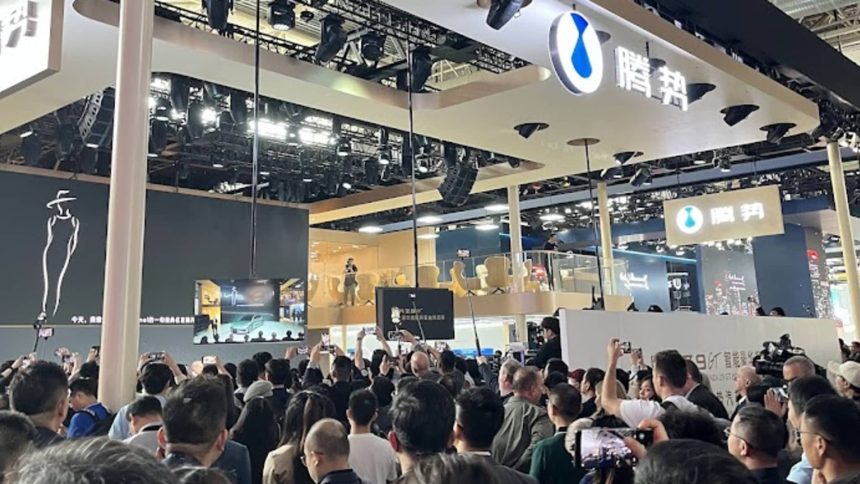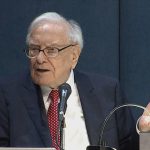Investment analysts are coalescing around a few potential winners in China’s car market after a 10-day auto show in Beijing put the ferocious competition on full display. The opening morning of China’s biggest auto show of the year — April 25 in this case — is typically a mad rush. But this time, the sheer number of people and car launches meant movement between booths often slowed to a crawl. I found that the second day wasn’t much better, in contrast to an emptying out in prior years. “The number of visitors this year was simply overwhelming,” Nick Lai, head of China equity research and Asia Pacific autos research at JPMorgan said in a late April report, noting an uptick in live-streamers and overseas dealers attending the show. “This year, we notice[d] a meaningful amount of foreign visitors who are Chinese brands’ overseas dealers or importers,” JPMorgan analysts said. They expect overseas markets can contribute about one-fourth of leading producer BYD ‘s car profits this year. Tesla , which gets more than a fifth of its sales in China, hasn’t exhibited at the main auto show since protestors disrupted its booth in 2021 . But more recently, CEO Elon Musk made a surprise visit to Beijing last weekend, the company overcame a data security hurdle for local car sales and inched closer to getting its driver-assist software approved for use in China . “Despite the Chinese car market being ~50% larger than Europe, it has about 170 brands operating in the market vs 80 in Europe, which clearly suggests an oversaturation of the market with poor economies of scale selling about 150k cars per brand vs ~200k in the EU,” JPMorgan European autos analysts said in a separate report last month. “This is leading to irrational competition at a point in time of transition,” from internal combustion engines to battery electric vehicles,”the report said, “which begs the question if International OEMs, including Premium, should be competing in the entry or compact segment respectively over the next 5 years.” Open to the public After two days of restricting access only to business and media, the Beijing auto show opened to the general public. Car companies then competed on attracting consumers — beyond offering coffee and prizes. Porsche and Geely -backed Zeekr both showed Apple Vision Pro experiences. The device isn’t yet available in China. Brands from Japanese automaker Mazda to Chinese EV start-up Nezha hired musicians and dancers to perform, together with a brief fashion show around the cars. Often, a few seconds before the show ended, the organizers would remove the barriers, allowing the crowd to rush up to the cars and performers. Autonomous driving supplier Asensing participated in the auto show to learn about the latest industry trends while showing off its own sensors and chips in a bid to support a global expansion, said senior brand and public relations director Zhang Haizhou, noting “most people’s next car is set to be much smarter.” More than 110 new car models debuted at the auto show in Beijing, according to the organizers. “Auto shows have become a marketing tool for top brands to gain traction via not only their products but vocal management,” Morgan Stanley Asia Pacific autos analysts said in a report last week. “The founders of EV makers, particularly brands like Xiaomi and BYD, stole the show,” they said. Word was, Xiaomi founder Lei Jun was walking around the exhibition center after giving a speech on the morning of April 25 to promote his company’s new SU7 electric sedan. “Xiaomi was one of the surprising standouts, with the most social media hits for SU7 and its chairman Lei Jun,” Jefferies’ auto equity analysts said in a May 1 report. “We learnt that marketing matters and that’s rich in [Xiaomi’s] DNA as the consumer electronics juggernaut.” The smartphone and home appliance company said it delivered 7,058 units of the SU7 in April, when deliveries began. Nio and Zhejiang-based Leapmotor reported better-than-expected deliveries in April, according to Bank of America Merrill Lynch analysts. Nio shares have surged more than 50% since a mid-April low. “We believe that orders will improve [month-over-month] in May, thanks to [a] stimulus policy announced on 26 April,” the BofA analysts said in a separate report. Trade-in policy As part of China’s push this year to encourage trade-ins, the Ministry of Commerce said that through the end of this year, certain purchases of new energy vehicles and some fuel-powered cars may be eligible for subsidies of about $1,000 or more. Jefferies’ analysts estimate the policy could boost China’s passenger vehicle sales by 1 million units this year, evenly split between electric and gas-powered models. The new forecast implies new energy vehicle penetration of 45%, up from 44% previously, the report said. The analysts highlighted their Chinese car stock picks as Leapmotor, Geely and BYD, all rated buy and listed in Hong Kong. As of Friday’s close, Leapmotor had the greatest upside to Jefferies’ price target — implying potential gains of 20%. JPMorgan’s top picks also include BYD and Leapmotor, seeing them as potential beneficiaries of government stimulus. Meanwhile, the analysts expect Geely and Xpeng could “benefit from near-term positive market sentiment.” The focus on Chinese automakers indicates foreign companies are losing out. “During an investor day in Beijing ahead of the Auto Show, [ Volkswagen ] management gave an honest assessment of how VW, along with most foreign OEMs, misjudged the change in consumer demand and missed the emergence of a cost-competitive domestic Chinese industry in better sync with consumer trends,” the Jefferies report said. “Having lost market leadership, VW aims to retain its No. 1 position among foreign OEMs” Jefferies also has buy ratings on Volkswagen and its local electric car partner, Xpeng , but only rates Tesla and Toyota Motor as holds. — CNBC’s Michael Bloom contributed to this report.
Read the full article here




